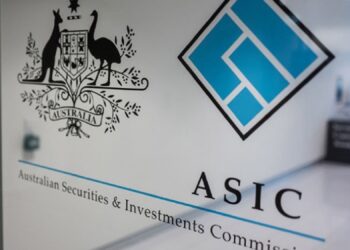It is vital SMSF practitioners have a thorough understanding of the in-house asset rules in order to avoid potential breaches. AMP SMSF's Peter Burgess explains how the in-house asset rules work.
I was recently asked whether a self managed super fund (SMSF) which leases a residential property to a related party would breach the in-house asset rules if the lease was terminated, or the property was sold, before 30 June.
The suggestion was that as the in-house assets test is applied at 30 June each year, as long as the fund's in-house assets at that time were under the 5 per cent limit, no breach of the in-house asset rules would have occurred.
For SMSF practitioners, this scenario illustrates the importance of being able to navigate your way through the in-house asset rules in the Superannuation Industry (Supervision) Act 1993 (the SIS Act) and, when called on, being able to back up your advice with references to the relevant sections of the SIS Act.
Breaching the rules which restrict or prohibit the use of fund assets by a member or a related party of the fund is a serious offence and could result in the SMSF losing its compliance status.
It is therefore essential that SMSF practitioners have a thorough understanding of the in-house asset rules, which are designed to severely limit the use of fund assets by related parties and to reduce the inherent financial risks of investing fund assets in related parties.
Important considerations: Section 83
When responding to in-house asset questions like this, it is important to consider the entirety of the SIS Act provisions which relate to in-house assets.
Section 82 of the SIS Act says that if the fund's market value ratio of in-house assets exceeds 5 per cent as at 30 June, the trustees must prepare a written plan that explains how the trustees intend to comply with the 5 per cent limit by disposing of one or more in-house assets over the next 12 months.
However, what is more important and relevant in this scenario is section 83 of the SIS Act, which says that a fund must not acquire an in-house asset at any time during the year if it would result in the market value ratio of the fund's in-house assets exceeding 5 per cent.
Focusing solely on section 82 and the need for the fund to be under the 5 per cent limit as at 30 June (which is often the case when we talk about in-house assets issues), may lead to the misconception that no breach of the in-house asset rules would occur in our scenario.
Clearly, when section 83 is applied to our scenario (and assuming the residential property represents more than 5 per cent of the fund's value), the SMSF in question would be in breach of the in-house asset rules.
Even though section 83 refers to the acquisition of an in-house asset, subsection 83(4) of the SIS Act says for the avoidance of doubt, a reference to acquiring an in-house asset includes a reference to entering into a lease or lease arrangement with a related party.
Therefore, for the purposes of section 83, it is irrelevant whether or not the lease arrangement with the related party was put in place before or after the fund acquired the property.
Other considerations
Putting aside section 83 for a moment, and assuming the fund's market value ratio of in-house assets exceeded 5 per cent at 30 June, would it be acceptable as part of the trustee's written plan under section 82 for the trustees to address the in-house asset issue by simply terminating the lease with the related party?
This question was put to the National Tax Liaison Superannuation Technical Sub-Group (NTLG) in June 2012. In their response to this question, the Australian Taxation Office (ATO) said that it is the residential property rather than the lease that is an in-house asset.
Simply terminating the lease does not result in the in-house asset (the residential property) being disposed of for the purposes of section 82 of the SIS Act.
Therefore, cessation of the lease to the related party would not satisfy the requirements of section 82, even though it might reduce the market value ratio of the fund's in-house assets to below the 5 per cent limit.
While terminating the lease in this scenario will not technically meet the requirements of section 82, taking such proactive rectification steps may be looked upon more favourable by the ATO in determining what penalties (if any) would be applied.
Trustees should seek professional advice and consult with the ATO before embarking on this type of rectification strategy.
It's not just about 30 June
Too often discussions about in-house assets focus on 30 June and the need to ensure the fund's market value ratio of in-house assets is in order at the time.
It is equally important to consider the in-house rules in their entirety and, in particular, the rules which severely limit the acquisition of new in-house assets during the course of the income year.
Peter Burgess is head of policy and technical at AMP SMSF.
Originally published by SMSF Essentials.





